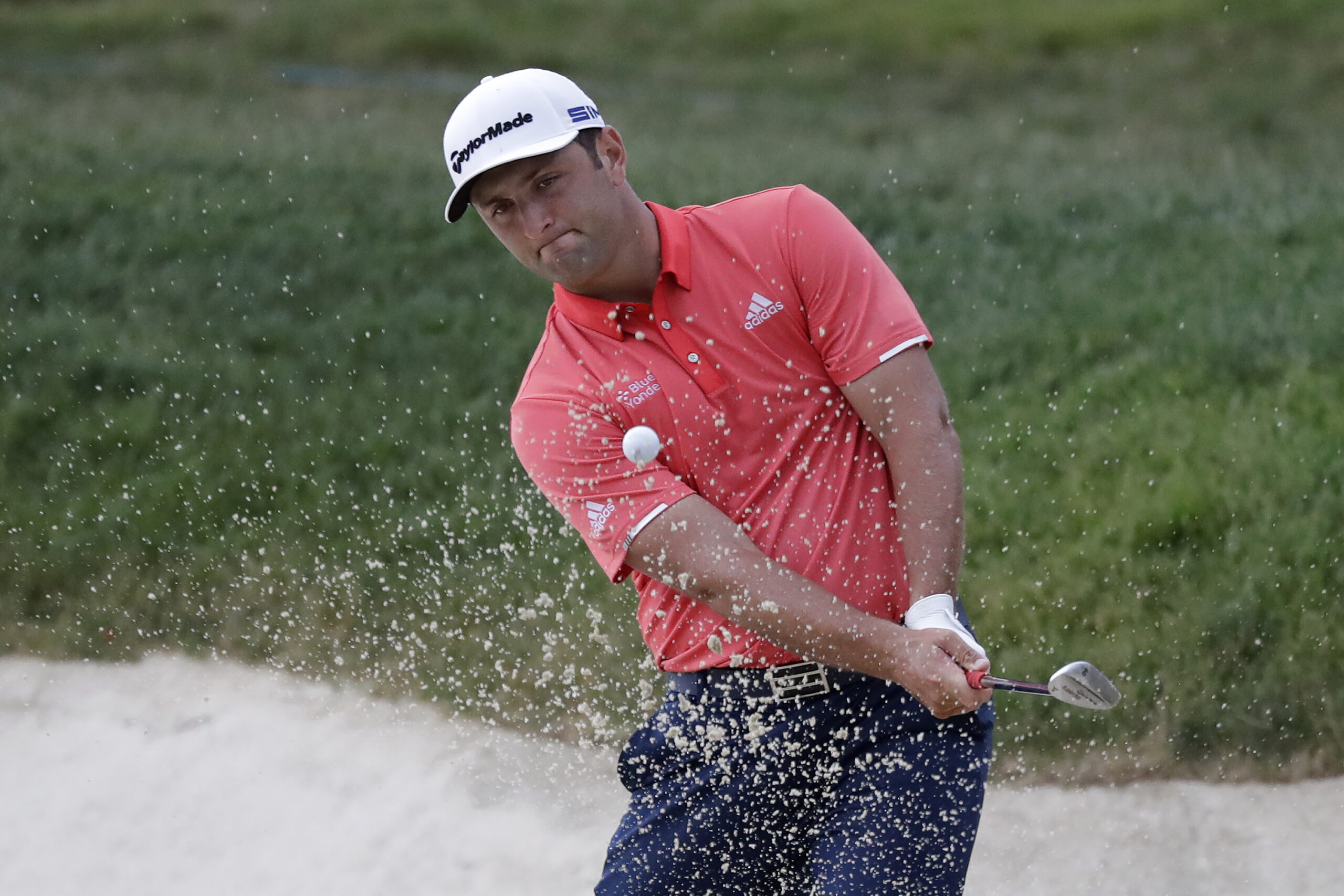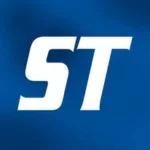
If you were to draw up a sport suited for social distancing, it would be hard to craft something better than golf. Nonetheless, the efforts being taken by the PGA Tour to protect its players, caddies and essential event staff at its events, which have been taking place since mid-June, are extraordinary.
“We have the built-in benefit of playing outdoors across hundreds of acres,” said Andy Levinson, the tour’s senior vice president of tournament administration and the point person on its COVID-19 plans. “We knew we could reasonably practice social-distancing throughout the operation of an event, which is ideal because physical space is our best defense against this virus. But we also have implemented a variety of screening methods.”
From heartbeat-tracking bracelets to mobile testing labs that move from city to city, to something as simple as a text message each morning asking how key people are feeling, the tour has taken a comprehensive approach to its testing procedures. As a result, nine players and caddies have had to withdraw from a total of seven tournaments across six states. Of those, five were detected during pre-tournament screening.
Sponsored Content
Here is a look at how one professional sports organization has approached its testing and the partners it is working with to make it happen.
Mobile Labs for Every Host Site
For PGA Tour players, caddies and event staff, the testing protocol begins before they travel to the tournament. All essential people receive an at-home saliva test kit that gets shipped to their location. Over Zoom, they perform the test with a medical consultant observing the test to be sure it is collected correctly. By conducting that test, Levinson said, the tour can avoid someone traveling to a tournament site who may be positive. “This is just to know that if you’re going to travel to another city, at least you have some understanding that you won’t have to test positive there and ultimately have to isolate,” he said.

Once players, caddies and those workers who may be in contact with them are on site, testing continues with the help of a mobile lab that the tour has contracted with Sanford Health. The Sioux Falls, South Dakota-based company is a sponsor of a stop on the PGA Champions Tour, so the firm had a connection with the tour. Through the help of three mobile units located inside a tractor trailer (which can move to each tour location, including the Korn Ferry developmental tour and the PGA Champions Tour), the tour can conduct nasal swab testing and get results back in an hour to three hours.
Levinson said the units have helped the tour with several challenges that officials had before embarking on the concept of creating a new bubble in every host city. “We were really fortunate to come up with a testing solution that allows us to get our result times back very quickly and also to not utilize local resources,” he said. “Those were two key principles we wanted to follow in developing our plan. Sanford Health reached out to us and said they have these mobile laboratories that we think might be a good solution. As we got into it, we found that this is incredible. It helps us solve both our challenges.”
Players, caddies and staff are only allowed on the tournament site itself once that test comes back negative. After that they are thermal-scanned each time they enter the event site as well, providing another layer of protection.
The Importance of a Two-Question Text
While the mobile lab and multiple rounds of testing are a luxury that only professional sports organizations may be able to afford, another technology the tour is using as a first line of defense is one that all sports organizations may be able to employ.

Partnering with Healthy Roster, a Columbus, Ohio-based electronic medical records platform, the tour is using an app that sends a daily text message to each player, caddie and essential event staff before and after they arrive at the event. The text message contains two questions: Have you had a temperature of 100.4 or greater in the last 24 hours? And do you feel sick? A yes answer to either question prompts a dropdown of potential symptoms. And it also triggers a notification to tour officials to investigate further.
“It’s a really effective tool,” Levinson said. “You obviously have to trust people will answer the question honestly, but in this environment we believe everyone is focused on everything they need to. We have had people who have called attention to themselves and have sought medical care and have sought additional testing.”
Healthy Roster has been in sports for years, with its services mainly used at the high school and collegiate level. Nathan Heerdt, the company’s co-founder and CEO, said the typical service has been providing software to track concerns such as concussions and to help medical directors on site at an event diagnose a potential health hazard by connecting them through a live telechat with other doctors. In the wake of COVID-19, the company pivoted its technology to include the questionnaire that the PGA Tour is using. “We’re a five-year old company,” Heerdt said, “so the word start-up is beginning to wear off — but not entirely. We’re pretty nimble, so when we recognized COVID was a thing, we were able to adjust really quickly.”
The simplicity of the questioning is one of the benefits of the app. “It doesn’t strain the golfer, caddie or event person with a bunch of questions,” Heerdt said. “If they’re feeling fine, they’re done in 30 seconds. If they’re not, it doesn’t take long to figure out what’s going wrong.”
But while it may seem simple, Healthy Roster’s tech is linking other information in other important ways. In addition to providing an initial screening, the app links to a dashboard for the PGA Tour’s medical director to view testing history of each individual and other important information. The Healthy Roster medical record system is also connected to the mobile lab units, so everyone who is tested on site can also receive quick word about their results.
“It’s really important to have a good results-management system,” Levinson said. “If we find a positive situation, we need to act quickly, activate contact tracing and get that person into isolation.”
When it comes to the text questionnaire, others are catching on to this simple first step. Healthy Roster now has similar contracts in place with the USGA and the LPGA, and Heerdt said more than 100 sports organizations have signed on in recent weeks as well.
Additional Help Right on the Wrist

And if those steps weren’t enough, the PGA Tour has also partnered with WHOOP to allow players and caddies to have access to the company’s bio-reading fitness bracelets. Among other things, WHOOP bracelets can monitor heart rates while sleeping. An elevated heart rate could be a first sign that something is wrong, and the bracelet allows those wearing it to know immediately if a flag has been raised before they experience any symptoms.
The bracelets are not mandatory for players to wear, but those who have used it have already been able to ward off potential trouble.
“We did have a player who noticed a spike — he was a long-time user who noticed a spike in his respiration rate and came in the next morning,” Levinson said. “He felt fine otherwise. But he told one of our screeners that he was concerned and it turned out he was positive. WHOOP gives our constituents another layer of protection and screening in this process.”
Lessons Learned After Initial Launch
In the weeks since the tour began its protocols, the PGA team has re-evaluated its testing steps as it’s gone along. For example, initially people were allowed on to the event site before they received their results from the mobile lab. Now a confirmed negative test is required before anyone can enter the site. “It’s a better policy,” Levinson said of the new rules. “It further protects us from spread.”
The tour also has a charter flight program for players to travel from one tournament to the next. If they fly on the charter, they require a separate positive test result before being allowed on board. About 100 players and caddies take advantage of the charter each week, Levinson said.
All of this points to a rigorous program that has allowed the tour to continue its events, despite being a sport that would appear not to need as many precautions as others. It’s also an eye-opener on the extent organizers need to go through to ensure their events are safe for those on site. Of particular note, even with these precautions, the PGA Tour has made the decision to ban spectators from all remaining events this season.
Levinson said the challenge becomes heightened since the tour by its nature moves to a new city each week. “We have been working very closely with all the local authorities, whether that’s health departments, mayors’ offices or governors’ offices to make sure they know early what we’re doing and how we’re keeping a safe environment when we come to town,” he said. “We’ve fortunately had a great deal of support in the cities we’ve been to and the ones we’re going to.”
But he also credits those on site for doing their part in the system to make it all work. “Our players and caddies have been amazing through this,” Levinson said. “We did a lot of education before we returned to competition the week of June 8. There was a lot of education to tell them what to expect and they really bought in. They really understand what their responsibilities are to make this work and make it sustainable.”












 Copyright © 2025 by Northstar Travel Media LLC. All Rights Reserved. 301 Route 17 N, Suite 1150, Rutherford, NJ 07070 USA | Telephone: (201) 902-2000
Copyright © 2025 by Northstar Travel Media LLC. All Rights Reserved. 301 Route 17 N, Suite 1150, Rutherford, NJ 07070 USA | Telephone: (201) 902-2000